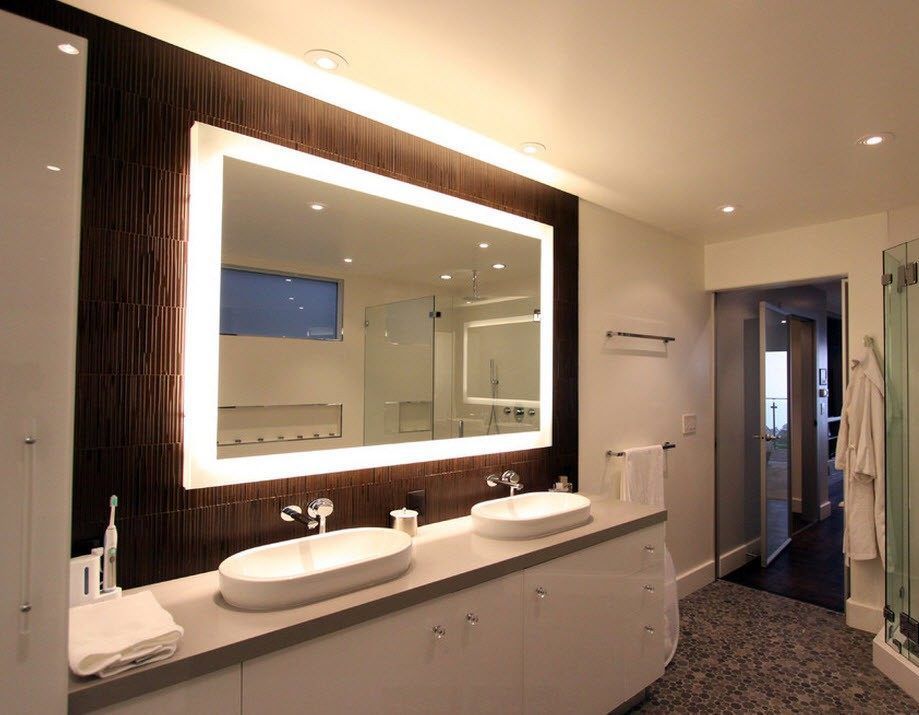 Making a mirror with lights do it yourself
Making a mirror with lights do it yourself
Glue for mirrors. Glue the reflection!
Not only beautiful ladies, but also many men just love to admire themselves in the mirrors on the walls. The mirror is generally an amazing invention. It can not only accurately convey your image, but also visually enlarge the room if you attach this miracle on the wall. About an unusual method of attachment to surfaces - how to glue a mirror to the wall, we want to talk in our material.
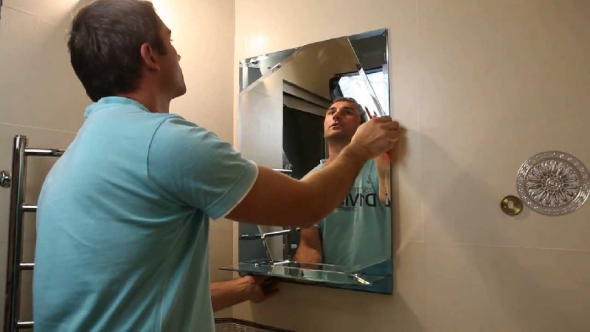
The mirror is one of the few items that can be attached to the walls in any place and in unlimited quantities.
Content
Mirror adhesive: what kind of animal is it?
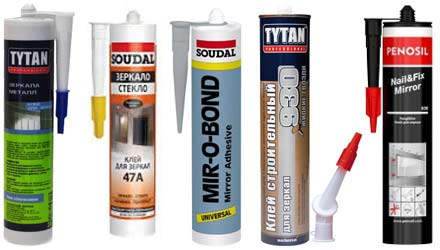
Types of construction glue for mirrors and glass
Glue for mirrors on the walls is sometimes called liquid nails, and it came to us in the seventies from America, or rather from Texas. The composition of this tool includes synthesized rubber and polymeric substances. Classical glue for surfaces and installation works includes special clay with high plastic properties. This substance is mined only in Texas, so the clay has a relatively high cost. Everything else, in this state is the largest factory for the production of adhesive for mirrors.

Clay Moment Mounting Liquid Nails for mirrors
A number of manufacturers, trying to save on the final cost of the product, instead of clay, add special chalk to the wall glue, therefore the liquid nails are white. The composition of the adhesive for surfaces, which is based on clay, is injected with titanium dioxide - this component also paints the product white.
In addition to all other components, acetone liquid and toluene are added to the adhesives. The latter substance improves the setting properties of the tool, and the first helps the adhesive for mirrors on the walls to dry faster on the surface during installation. These substances have toxicity and a pungent odor: in cheap formulations, the percentage of these components is very large, therefore inexpensive liquid nails emit a suffocating chemical scent. All this bad smell glue owe cheap components in the composition. But high-quality adhesives practically do not smell, so it is logical to assume: the savings here is inappropriate.
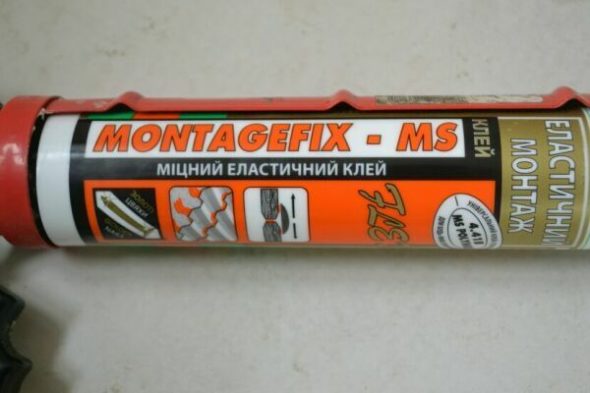
Strong elastic glue for gluing mirrors
All types and properties

Neoprene mounting glue QUELYD Mastifiks for mirrors

Acrylic mounting glue LACRYSIL “NADMICNI” for interior and exterior use
Mirror adhesive on walls can be neoprene or acrylic
| Neoprene | In the composition of synthetic rubber. Able to glue any mirror to the tile. Good on surfaces. The disadvantage is a strong chemical smell. |
| Acrylic | Possess water solubility. Not applicable to all types of surfaces. Disadvantage: high temperatures are contraindicated for acrylic glue. It is impossible to glue the mirror to metal surfaces and tiles. They are afraid of water.
Pros: different environmental friendliness and harmlessness. |

GROVER GR100 rubber glue for heavy structures and mirrors
With the help of liquid nails and adhesive tape, you can easily glue the mirror to the tile almost as much as you would do it with hardware, and this can be done on any kind of surfaces, be it metal plates, glass walls, tile.
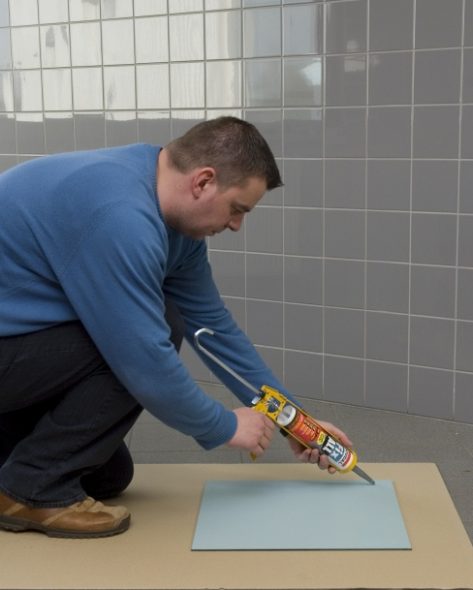
Using a gun for adhesives and sealants we apply glue strips to the back wall of the mirror

Glue strips 5-7 mm wide should be applied at regular intervals of at least 5 cm and at a distance of 4 cm from the edge of the mirror
Now there will be no limit to the flight of fancy, because the mirror can be hung anywhere, one has only to think and do.
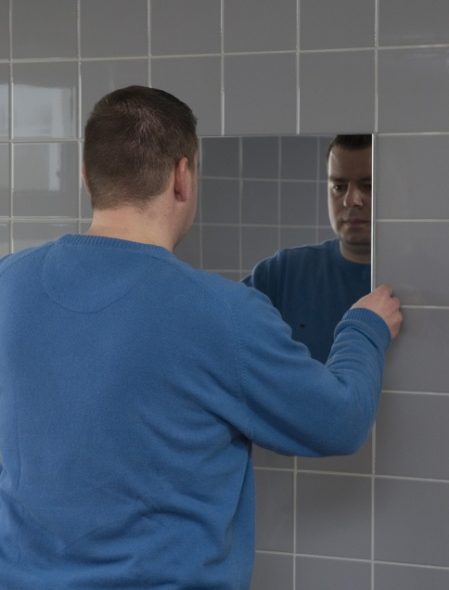
After applying the adhesive, apply the mirror to the wall and strongly press on the entire surface so as to leave a seam 2-3 mm thick
By the way, in addition to gluing mirrors, with the help of liquid nails and scotch it is allowed to glue between each other practically any kind of materials:
- tree,
- tile,
- concrete,
- metal,
- glass,
- plastic.

Waterproof, quick-drying installation adhesive for mirrors and glass constructions
We use glue for your mirrors
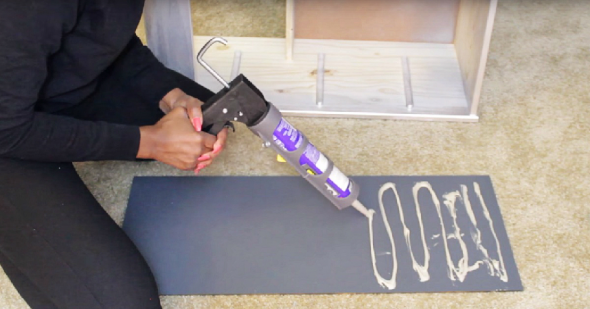
Any of the synthetic adhesives has enough strength to attach even a heavy mirror on the wall in the presence of wallpaper
Such compositions for installation works are sold in tubes. Independently, you will not be able to squeeze the product out of the packaging; this can only be done with a special construction pistol. Simply insert the tube into the gun and pull the trigger: glue will squeeze through the "nose".
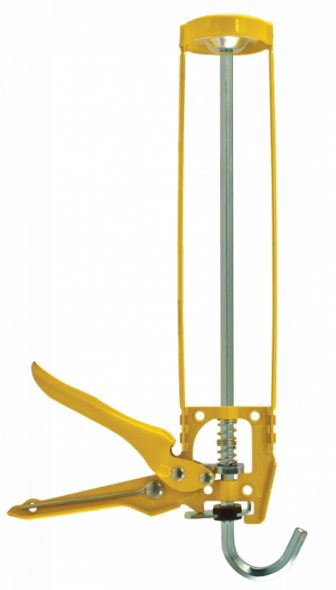
Hand gun for glues and sealants in cartridges
The use of a gun for squeezing liquid nails makes it possible to apply the composition even in the most hard-to-reach places. In this case, you do not get dirty, and the seams will be very neat. Before using the adhesive, carefully read the instructions offered by the supplier. It will be written throughout the manual whether glue is suitable for mirrors, whether it will damage the amalgam, is it afraid of water, and how firmly it is attached to surfaces. By the way, if you intend to perform work with glue and tape in a closed room, be sure to pay attention to the item in the instructions, indicating the possibility of such actions. After all, liquid nails can only be used for outdoor work, so it is forbidden to use such compounds inside the house.

Chemically neutral silicone adhesive sealant for mirrors and mirror walls
Before buying, make sure that the liquid nails are intended for use against mirrors on the walls. Defat the surface with soda solution and mark the lower part of the mirror attachment. Build a support element for the mirror, glue a double-sided tape and apply glue to the surface. Then it is worth waiting for ten minutes, pressing the mirror against the wall. After two days, the support can be removed. For the process of fixing the mirror, you can use double-sided tape.
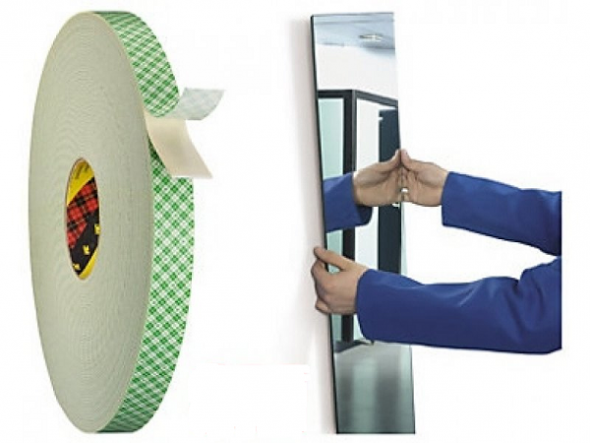
Instead of glue, you can use good quality double-sided construction tape.
Glue with pleasure: how to glue the mirror?
We advise you to buy glue for mirrors only from trusted sellers. Macroflex is very popular: it can be used to attach any kind of mirror: whether it is a mosaic or decorative tile. This composition is able to withstand even the surface of the mirror with a large weight, it perfectly adheres to any surfaces, suitable for rooms with the presence of water. Macroflex can glue not only ceramics, but also polystyrene, metal or wood. In addition, this tool is not afraid of exposure to high temperatures and does not harm the amalgam. The undoubted advantage is a fact: Macroflex can be used both outside and inside the premises.
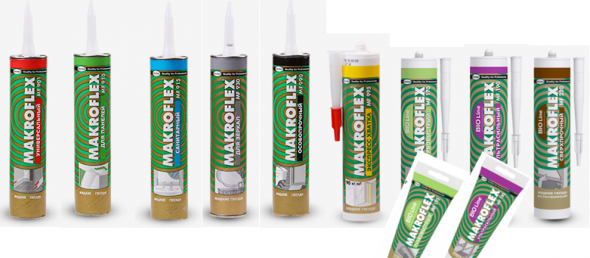
Makroflex range of adhesives for various surfaces
How to glue the mirror to the wall? No less popular liquid nails Crassus, produced in Poland. Such compositions are resistant to moisture and applicable to all types of surfaces. Crassus is resistant to temperature changes, practically does not emit an unpleasant odor and perfectly adheres. The main advantage of Crassus glue is low price, the whole cost does not exceed 150 rubles.
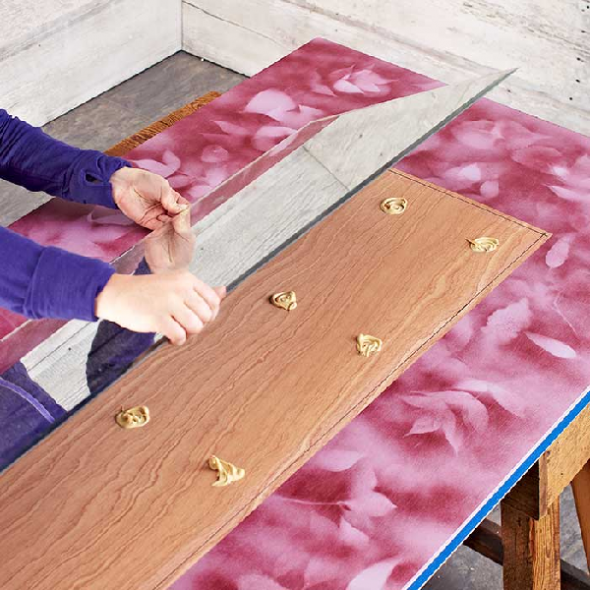
To attach a mirror with maximum strength, you will need to install an intermediate plate, for example, a small sheet of fiberboard
What to fear
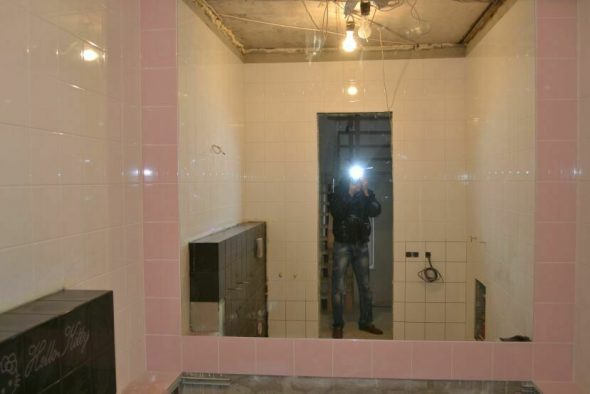
Installing a mirror at the time of tiling the bathroom
Observe precautions when using mirror glue.
- Do not heat cylinder on fire.

It is forbidden to heat the cylinders with liquid nails or glue for mirrors
- When the nails evaporate, it is forbidden to smoke near cigarettes (evaporation can ignite).

It is forbidden to smoke near the glued surface.
- Ventilate well the room where you use glue, because its vapors are toxic. This is especially true for small rooms: bathrooms and toilets.
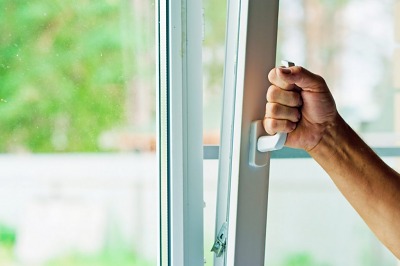
Be sure to ventilate the room
- Use a respirator, because inhalation of wall glue can be poisoned.
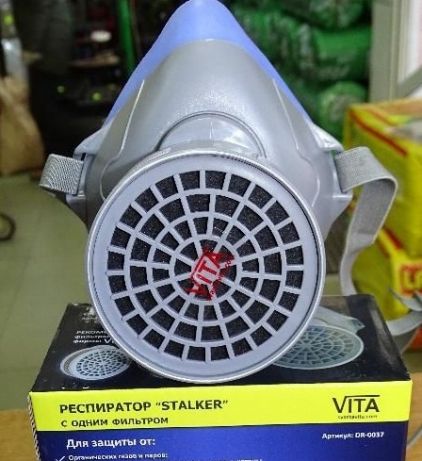
Use protective equipment
- Keep skin and eyes away from liquid nails.

Avoid contact with eyes and skin.
- Do not allow kids to play with adhesive for surfaces, because this can end badly.

Do not allow children to use glue
Hopefully, after reading the article, you have discovered a new glue for mirrors on the walls. Now you can safely go to the store and decorate the house. No wonder the entire abundance of liquid nails sold in Russia, it remains only to rejoice.
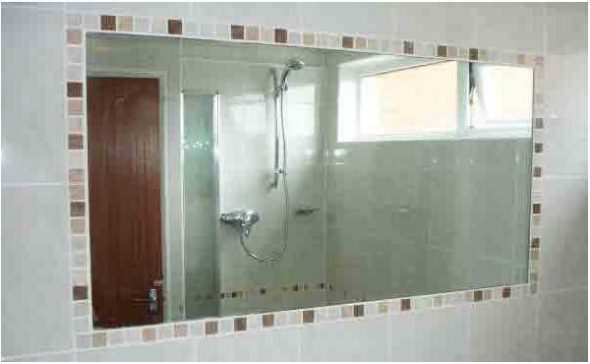
Mirror mounted with glue
Video: Securely attach the mirror
 Making a mirror with lights do it yourself
Making a mirror with lights do it yourself
 How to restore the mirror at home
How to restore the mirror at home
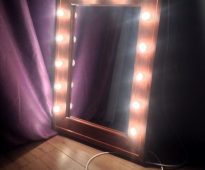 Front Mirror Decor
Front Mirror Decor
 How to wash the mirror without divorce at home
How to wash the mirror without divorce at home
 Hallway design with mirrors - spectacular and original
Hallway design with mirrors - spectacular and original
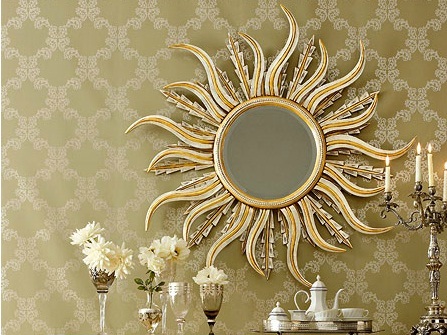 Mirror-sun: the benefits of creating products with their own hands
Mirror-sun: the benefits of creating products with their own hands






